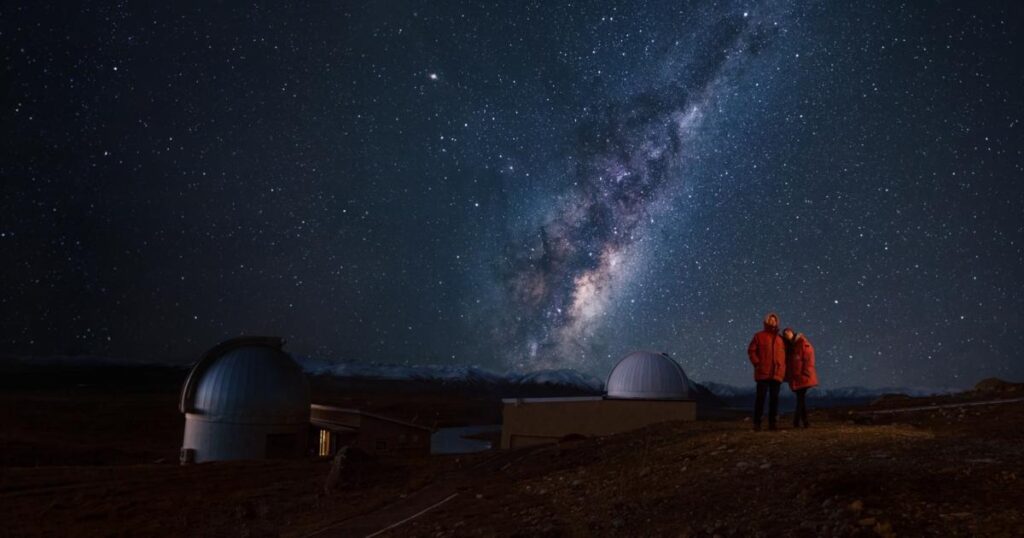How to celebrate Matariki - Maori New Year
Posted by Maris on 26th Dec 2023
In the calendar of New Zealand, Matariki is a unique event that initiates the Māori New Year. This is the moment to look back on the previous year, appreciate the present, and make plans for the next, symbolized by the Matariki cluster of stars making a reappearance in our night sky.
What is Matariki?

During the middle of winter, in New Zealand, the Matariki star cluster can be seen in the early morning sky.
The star cluster is well-known worldwide and is visible from all across the world at various times of the year. With hundreds of member stars, it is one of the brightest clusters in the sky.
There are several names for Matariki around the world. It is referred to in English as Pleiades, or the Seven Sisters, from its ancient Greek name. It is known as Makali'i in Hawaiian, which means "eyes of royalty," and Subaru in Japanese, which means "gathered together."
What is the significance of Matariki?

In Te Ao Māori, or the Māori worldview, Matariki is regarded as the Māori New Year.
The return of the Matariki stars to the early morning sky signifies the conclusion of one year and the start of another, and it is closely associated with the maramataka, or Māori lunar calendar.
The core of the Matariki public holiday celebrations is Mātauranga Māori, or ancestral knowledge and wisdom, and this will be a time for;
Remembering - Paying tribute to those we have lost since Matariki's final ascent
Enjoying the moment - Coming together to express gratitude for what we have
Looking ahead: Anticipating the opportunities that a new year holds
In the past, planting, harvesting, and hunting were also intimately associated with the stars of Matariki. A clean and dazzling starry sky portended a bountiful season to come.

When is Matariki?

Mid-winter, from late May to early July, is Matariki. The dates differ based on the location and the tribes.
Friday, July 14, 2023, was the inaugural Matariki public holiday observed in New Zealand.
The constellation will reappear on Friday, June 28, 2024 when Matariki falls on that day. The hours before dawn are ideal for seeing the Matariki cluster.
How to celebrate Matariki
Traditionally, Matariki festivities included lighting ritual fires, making offerings and various celebrations to farewell the dead, honour ancestors and celebrate life.
Nowadays, people all across Aotearoa come together to remember their ancestors, share (kai) food, sing songs, tell stories and play music.
Matariki is about reconnecting with your home and whānau (family).
Today there are many ways to acknowledge the Māori New Year and observe the rising of Matariki;
- Take time to remember loved ones who are no longer with you
- Give thanks for the year that has passed
- Enjoy a Matariki feast together
- Plan for the next year
- Spend time with family and friends
- Write down your wishes for the year
- Plan to grow a garden
How to spot the Matariki stars

As one of the star clusters nearest to Earth, this constellation is one of the most obvious to the naked eye.
To find them, look to the northeast horizon before sunrise.
Then, search for the distinct line of stars that forms Tautoru, or Orion’s belt. Keep moving your gaze north of these three stars until you see a cluster of tiny stars that are roughly as wide as Tautoru is long. These are the Matariki stars.
The meaning of each Matariki star
The Matariki star cluster contains hundreds of stars but only nine are visible to the naked eye. Each of these nine stars has a distinct story and significance in Māori culture.
According to one Māori myth, the cluster represents a whaea or mother - Matariki - and her six daughters Tupuānuku, Tupuārangi, Waipunarangi, Waitī, Waitā and Ururangi.














